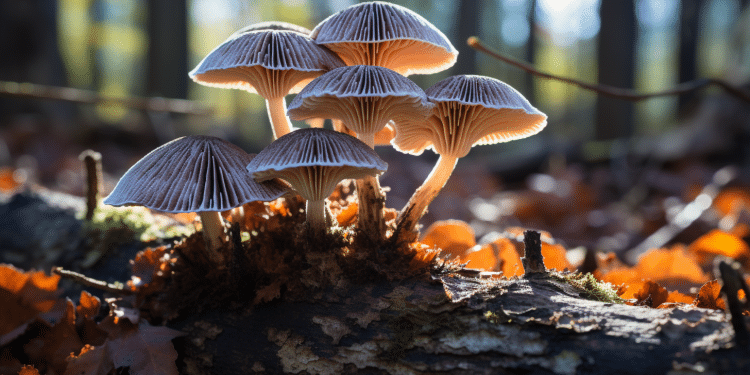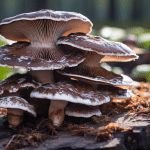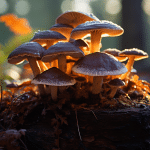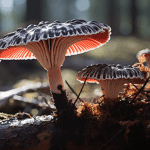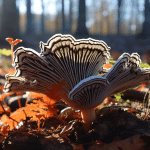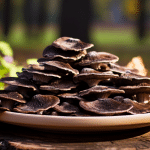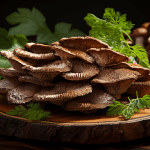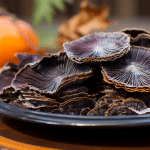How To Identify Turkey Tail Mushroom
Fortunately, when it comes to turkey tail mushroom identification, there are no toxic substitutes. So, this is a safe mushroom to pick, even if you end up with nothing like “the real deal”.
Because, yes, there are mushrooms out there that look like it, but they won’t have the health-supporting compounds turkey tails (scientific name Trametes versicolor) are known for, and valued for. So, use our 4 point checklist below to help you spot the real deal.
Then, put your newly-found skills at mushrooms deduction to use during the next woodland hike. If you choose to take foraging as you go, you may want to bring some of the fresh turkey tails home for some healthful tea.
Real vs. False Turkey Tail Mushroom
Turkey Tail Mushrooms are found in abundance on dead trees and stumps in the wild. They are one of the most common mushrooms found in forests.
Turkey tail mushrooms come in a range of colors, with some looking very different than others. But that is not the end of the matter. Some of the other mushrooms are a lot like Trametes versicolor, which makes things even more confusing.
These fakes are often called “false turkeytail mushrooms,” and include Stereum ostrea, Stereum hirstum, and Trichaptum abietinum. So, how do you distinguish “true” from “false” turkey tail mushrooms?
If you encounter something that looks like Trametes versicolor while hiking, turn the mushroom over. The real turkey tail fungus has obvious pores on the white underside, so it is classified as a polypore mushroom (i.e. Whereas, S. ostrea and S. hirstum have yellow, smooth undersides. You will also often find S. ostrea mushrooms with weeds growing around them.)
Checklist for identifying Turkey Tail Mushroom
If you can answer yes to all of the following questions regarding mushrooms that you have observed, you have found the real turkey tail!.
- Does your mushrooms show pores on the bottom side?
- Does the top of the mushroom have really fine hairs that makes it feel velvety?
- Is the top side of the mushroom covered with concentric bands of varying hues?
- Is the fresh mushroom thin, flexible, and pliable (see the video below)?
Physical Characteristics:
- Turkey tail mushrooms have distinct fan-shaped caps that display concentric rings;
- The caps exhibit a vibrant array of colors, ranging from various shades of brown to blues, greens, and purples;
- Their colorful patterns resemble the beautiful feathers of a wild turkey, giving them their name;
Habitat and Distribution:
- Turkey tail mushrooms thrive in a wide range of habitats, but are commonly found in forests;
- They prefer growing on decaying logs and stumps, contributing to the natural decomposition process;
- These mushrooms have a widespread distribution and can be encountered in many regions.
Video to Help With Identification
This video shows various characteristics of the real turkey tail mushrooms. It gets close to the mushroom, showing you the exquisite velvety texture, its concentric bands of color, and just how malleable a mushroom is supposed to be. The video below will walk you not only through identifying turkey tail mushrooms, but also brewing traditional teas with the ones you find in the wild! Perhaps you would like to reap the benefits of Turkey Tail mushrooms without the laborious task of searching and cooking the mushroom. In that case, you may use mushroom extract in powder form, like the Organic Turkey Tail Extract from Real Mushrooms.
Simply add 1 to 2 teaspoons of the powder into a cup of warm water, and enjoy this earthy, very healthy tea.
You can find our favourite capsules, powders, and tincture’s on the following pages of our website and learn more about each individually:
Best Turkey Tail Mushroom Supplement
Best Turkey Tail Mushroom Powder
Best Turkey Tail Mushroom Tincture
Learn more:
